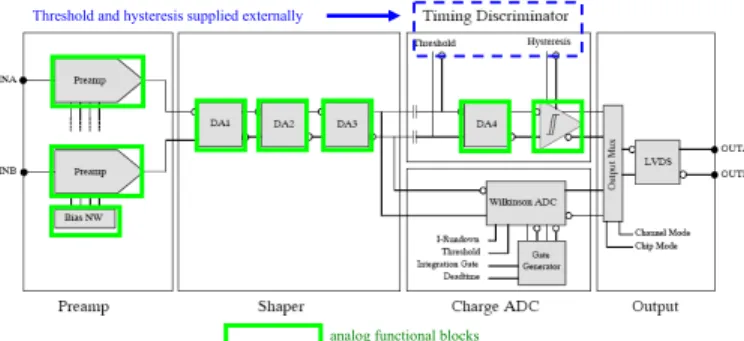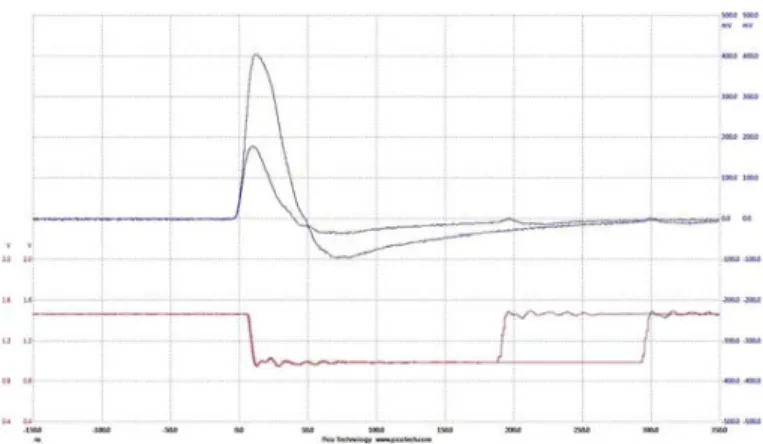Performance of the new
Amplifier-Shaper-Discriminator chip for the ATLAS MDT Chambers at the HL-LHC
H. Kroha ∗1 , S. Abovyan 1 , A. Baschirotto 2 , V. Danielyan 1 , M. Fras 1 , F. M¨uller 1 , S. Nowak 1 , F. Resta 2 , M. De Matteis 2 , R. Richter 1 , K. Schmidt-Sommerfeld 1 , Y. Zhao 1
1 Max-Planck-Institut f¨ur Physik, Munich
2 Univ. of Milano-Bicocca, Physics Department, Milano, Italy
Abstract—The Phase-II Upgrade of the ATLAS Muon Detector requires new electronics for the readout of the MDT drift tubes.
The first processing stage, the Amplifier-Shaper-Discriminator (ASD), determines the performance of the readout for crucial parameters like time resolution, gain uniformity, efficiency and noise rejection. An 8-channel ASD chip, using the IBM 130 nm CMOS 8RF-DM technology, has been designed, produced and tested. The area of the chip is 2.2 x 2.9 square mm size. We present results of detailed measurements as well as a comparision with simulation results of the chip behaviour at three different levels of detail.
The HL-LHC at CERN will operate at peak luminosities of a factor 5 7.5 beyond the nominal value of 10
34cm
−2s
−1. The high luminosity is a challenge for the readout system of the Monitored Drift Tube chambers (MDT) in the ATLAS Muon Spectrometer in two respects. Higher hit rates, mainly due to increased cavern background, drive data transmission to the rear end electronics to the limit of available bandwidth.
In addition, the new operating parameters of the L1 trigger - latency up to 60 µs and trigger rates up to 400 kHz - call for a replacement of the entire readout chain of the MDT chambers.
In this process of renewing the MDT readout, particular attention must be given to the first stage of the readout chain, the Amplifier with Shaping network and Discriminator (ASD).
This stage determines critical quantities, like signal risetime, signal-to-noise performance and threshold uniformity among the 8 channels of the chip, which are decisive for system parameters like spatial resolution of the track coordinates (represented by the drift time in the MDT tubes) and tracking efficiency.
Threshold and hysteresis supplied externally
analog functional blocks
Fig. 1: The functional block diagram of the ASD.
∗

